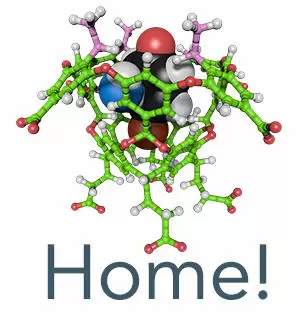Sullivan, M. R.; Yao, W.; Gibb, B. C. The thermodynamics of guest complexation to octa-acid and tetra-endo-methyl octa-acid: reference data for the sixth statistical assessment of modeling of proteins and ligands (SAMPL6). Supramolecular Chemistry 2019, 31, 184-189.
2019
2018
Cremer, P. D.; Flood, A. H.; Gibb, B. C.; Mobley, D. L. Collaborative Routes to Clarifying the Murky Waters of Aqueous Supramolecular Chemistry. Nature Chemistry 2018, 10, 8-16.
Hillyer, M. B.; Gan, H.; Gibb, B. C. Precision Switching in a Discrete Supramolecular Assembly: Alkali Metal Ion-Carboxylate Selectivities and the Cationic Hofmeister Effect. ChemPhysChem 2018, 19, 2285-2289.
Jordan, J. H.; Gibb, C.; Wishard, A.; Pham, T.; Gibb, B. C. Ion–Hydrocarbon and/or Ion–Ion Interactions: Direct and Reverse Hofmeister Effects in a Synthetic Host. Journal of the American Chemical Society 2018, 140, 4092-4099.
Barnett, W.; Tang, D.; Gibb, B. C.; Ashbaugh, H. S. Alkane guest packing drives switching between multimeric deep-cavity cavitand assembly states. Chem. Commun. 2018, 54, 2639-2642.
Alkane guest transfer into aqueous dimeric, tetrameric, hexameric, and octameric assemblies of the deep-cavity cavitand TEMOA is examined using molecular simulations. The experimental transitions between aggregation states strongly correlate with calculated alkane transfer free energy minima, demonstrating the guiding role of guest packing on stabilizing multimeric complexes. The predictive simulation approach described affords a salient rationale as to why octameric assemblies have yet to be experimentally observed.
Sullivan, M. R.; Yao, W.; Tang, D.; Ashbaugh, H. S.; Gibb, B. C. The Thermodynamics of Anion Complexation to Nonpolar Pockets. The Journal of Physical Chemistry B 2018, 122, 1702-1713.
2017
Avram, L.; Wishard, A. D.; Gibb, B. C.; Bar-Shir, A. Quantifying Guest Exchange in Supramolecular Systems. Angewante Chemie International Edition 2017, 56, 15314-15318.
Sullivan, M. R.; Sokkalingam, P.; Nguyen, T.; Donahue, J. P.; Gibb, B. C. Binding of carboxylate and trimethylammonium salts to octa-acid and TEMOA deep-cavity cavitands. Journal of Computer-Aided Molecular Design 2017, 31, 21-28.
Wang, K.; Gibb, B. C. Mapping the Binding Motifs of Deprotonated Monounsaturated Fatty Acids and Their Corresponding Methyl Esters within Supramolecular Capsules. The Journal of Organic Chemistry 2017, 82, 4279-4288.
Murray, J.; Kim, K.; Ogoshi, T.; Yao, W.; Gibb, B. C. The aqueous supramolecular chemistry of cucurbit[n]urils, pillar[n]arenes and deep-cavity cavitands. Chem. Soc. Rev. 2017, 46, 2479-2496.
This tutorial review summarizes the continuing exploration of three prominent water-soluble hosts: cucurbiturils, pillar[n]arenes and deep-cavity cavitands. As we describe, these hosts are revealing how orchestrating the hydrophobic effect can lead to a broad range of properties and applications, from: nano-reactors, supramolecular polymers, stimuli-responsive biointerfaces, switches, and novel purification devices. We also describe how their study is also revealing more details about the properties of water and aqueous solutions.

